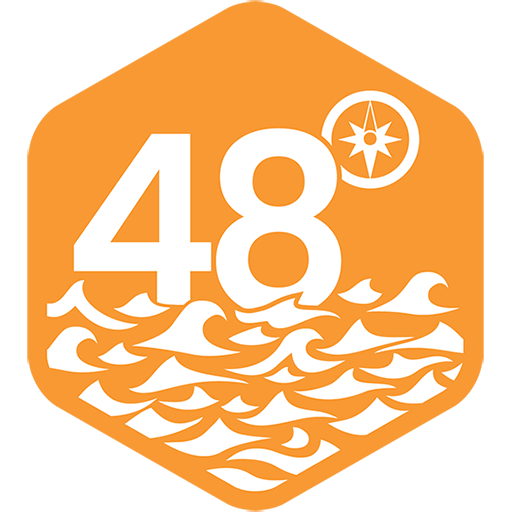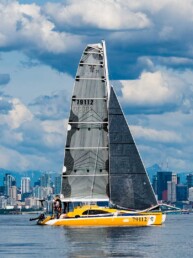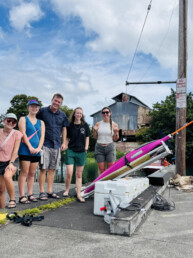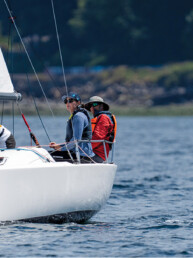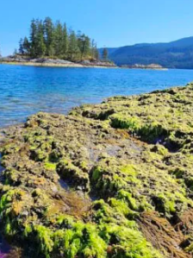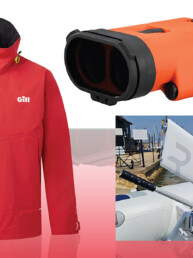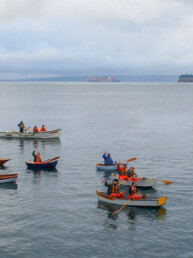At 20 miles around, Harstine Island could be circumnavigated with a powerboat in an hour. But freeway speeds yield freeway views: a blur of trees, missed inlets, and a flash of homes. A slower speed suits me better, one that lets me savor the scene.
I circle the island by sail and oar, turning those miles into days. I never tire of the circumnavigation, and when friends come along, the journey includes conversation, camaraderie, and different perspectives; seen through other eyes, the island is new to me again. So it was one sunny spring weekend when Dan, Galen, and I met in a gravel parking lot adjacent to a rural launch ramp where commercial shellfish crews came and went in their trucks and aluminum work boats.
Dan and I have sailed together many times over the years. He’s always faster at rigging and sailing than I am and I admire the elegance of his neat cockpit, satiny brightwork, and his systems, all down pat. Row Bird and I may not be so orderly, but Dan and I both want the same things from a cruise: not too many miles traveled, an early stop, and the opportunity to pull out our sketchbooks well before the sun sets.
I kept an eye on Galen, a new friend, as we packed our boats. He stowed a backpack into his aft locker, followed by a lump that looked like a drysuit, and then distributed bags of food and a teapot into a surprising number of well-organized smaller lockers. I was looking forward to getting to know him and was impressed by his preparedness.

A trickle of sweat rolled down my brow as I rowed away from the ramp. Everyone else was already in the water, stoked, but also surprised, by an 80-degree day in mid-May. The wind teased us with an occasional zephyr, although nobody was in a hurry; sails went up and down, oars were shipped and deployed. Conversations drifted across the water. We craned our necks to take in the old-growth trees towering over the water at Hope Island State Park and I noted changes to the shoreline since my last visit. Soon, a building ebb tide started to push us north for the first leg of our clockwise trip around the island.
Drifting past the rich tapestry of greens on the south end, Galen and I chatted about life and boats. He’d lived in the Pacific Northwest for most of his life, but this stretch of water was new territory for him. As we approached the Harstine Island Bridge, the pillars seemed to draw near at alarming speed; the current had clearly supplemented our casual rowing pace. Past a bend, the sound of cascading water beckoned us into a small cove. To our disappointment, it was only the outflow from a large culvert. But a few ducks in a pocket wetland gave us something to watch and as we probed into its 200-foot width, we mentally bookmarked the peaceful spot as a future overnighting berth for our tiny boats.
Continuing on, we rounded the second quarter of the island where ripples began to show in Pickering Passage. All sails were set as we traded tacks northward. Reclining on my floorboards, I kicked my feet up on a bench and savored the sight of the blue sky. The wind, and the sound of water lapping over wood, was so soothing that all conversation ceased. We stopped poking into divots on the shoreline and just sailed.
The wind gave out at the north end of the island, adjacent to the mouth of Jarrel Cove, where we slipped into the shallows just east of the state park dock and decided to spend the night. Surrounded by woods on three sides, the water was so calm that when I awoke around 2:00 a.m., I had to rock the boat to convince myself that I was still afloat.
Come morning, we packed and silently rowed away in the pre-dawn hush. Then the sun rose over the treetops, illuminating the water of Pickering Passage, which now looked like liquid jade, each bead of water from our oars lingering on its surface.
Two miles later, we reached the broad, mirror-like expanse of Case Inlet. There was no hint of the north wind we’d hoped for, which would allow us to continue our circumnavigation with minimal effort. But with no particular place to be, we were happy to take our time getting there, wherever “there” was.

After eating snacks, spinning yarns, and laying about as the day warmed, we lazily rowed a few miles south to McMicken Island State Park, where we felt we’d arrived in the tropics. Motorboats backed onto the beach. Sunbathers relaxed on lawn chairs, and shorts-wearing mariners in dinghies came and went from larger craft. A few brave souls even swam.
From the air, McMicken looks like a squid, with a long tentacle that reaches towards Harstine. As the tide drops, that tentacle, actually a sandbar, connects the islands. We joined the crowd, lounging in a shady spot on the shore, content to be out of the sun and in good company.
By lunchtime, just as we had become convinced that it was too hot to travel farther, boats in the anchorage started to shift on their moorings. “It’s just a land breeze,” Galen said; but after fifteen minutes, when it showed no signs of abating, we gathered our gear for departure. Before we got too far down the beach, a group of picnicking ladies stopped us.
“Are those your boats over there? And where are you headed?”
“Yes, that’s mine,” Dan replied, pointing to Otter. “We go where the breeze and currents let us… and we can sleep aboard, so the possibilities are many.”
Seemingly fascinated, the women peppered us with questions. It was fun to talk and flirt, but I worried that if we didn’t leave soon, the emerging sandbar would block our path, and we’d have to fight a headwind.
The picnickers seemed sad to see us depart. “Before you go, you should take some cheese,” one insisted, digging into her cooler and handing me a sizable, truffle-infused wedge.
Our provisions elevated by this generous gourmet gift, we launched our boats and then rowed with all our might in a few inches of water, attempting to generate enough momentum to slide over the bar. Although our shallow keels touched bottom a few times, we were soon underway, centerboards down, sails up and continuing south in a building breeze.
Two hours later, we’d crossed the turbulent waters of Dana Passage and rounded up in the shelter behind a small bluff in a deserted Henderson Inlet. Ignoring the houses dominating the horizon, we rafted up. Out came smoked salmon, crackers, cider, and of course, our truffle cheese.
Good food coupled with good company led to a jubilant mood. Tomorrow, we’d succeed in sailing or rowing the last few miles to complete the loop. But today we reflected on our luck in possessing these versatile boats: good for pulling ashore on the beach, big enough to sleep on, and unusual enough that people wanted to learn about them—and sometimes gift us fancy cheese.
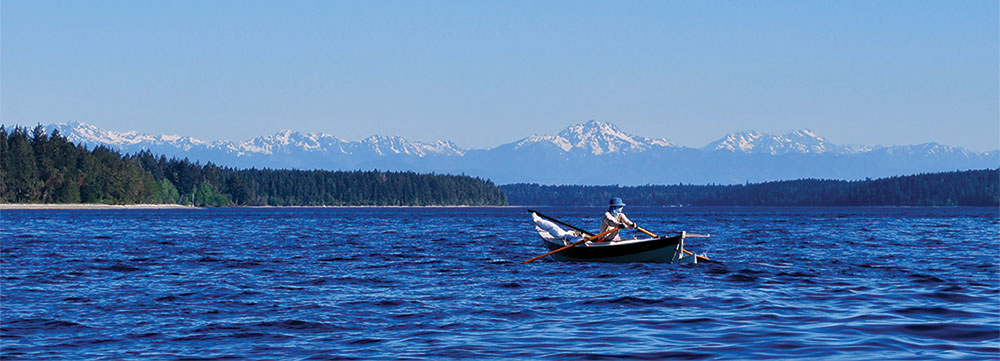
Photos courtesy of Galen Piehl.
Bruce Bateau sails and rows traditional boats with a modern twist in Portland, Oregon. His stories and adventures can be found at www.terrapintales.wordpress.com.
Bruce Bateau
Bruce Bateau sails and rows traditional boats with a modern twist in Portland, Ore. His stories and adventures can be found at www.terrapintales.wordpress.com
